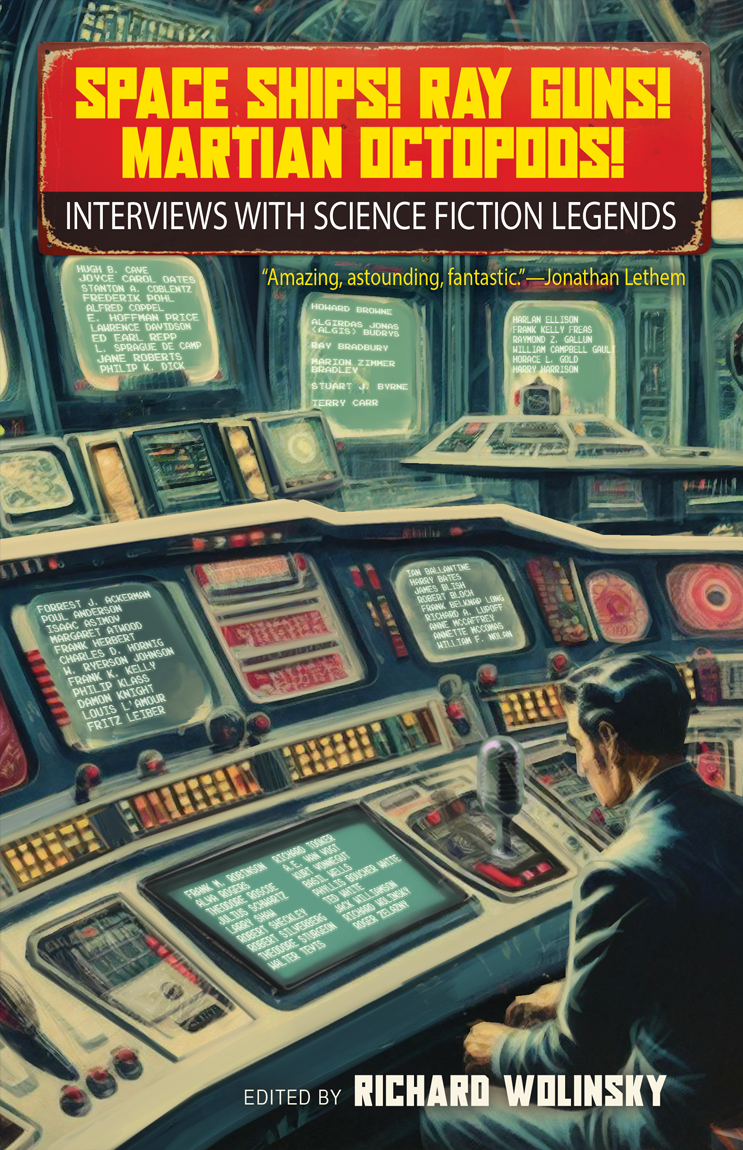
Space Ships! Ray Guns! Martian Octopods!: Interviews with Science Fiction Legends
by RICHARD WOLINSKY
Drawing from decades of radio interviews, this oral history weaves together the voices of over fifty science fiction writers, editors, and artists to chronicle the genre’s evolution from the 1920s to the 1960s, highlighting its colorful personalities, creative innovations, and behind-the-scenes controversies. The book offers a candid, often humorous look at the birth of fandom, the rise and fall of pulp magazines, and the enduring impact of the Golden Age on science fiction’s legacy.
Reader Review Summary
This book compiles over fifty interviews with major and lesser-known figures from the Golden Age of science fiction, drawing on two decades of radio broadcasts from the show 'Probabilities' (1977-1995). The interviews, conducted by Richard Wolinsky and his co-hosts Richard A. Lupoff and Lawrence Davidson, are arranged thematically and chronologically, covering the evolution of science fiction from the 1920s through the 1960s. The content includes anecdotes, personal recollections, and industry gossip from writers, editors, publishers, and artists such as Ray Bradbury, Isaac Asimov, Philip K. Dick, Harlan Ellison, and Margaret Atwood. The book explores the development of pulp magazines, the rise of paperback publishing, the role of fandom, and the personalities and disputes that shaped the genre, with stories ranging from humorous incidents to accounts of professional rivalries and financial struggles.
Readers appreciated the book's wealth of firsthand accounts and behind-the-scenes stories from influential science fiction figures, noting its value as an oral history that preserves voices from an era now largely out of living memory. Many found the anecdotes entertaining, citing examples such as disputes over payments, humorous personal stories (e.g., Randall Garrett fleeing a hotel room), and candid opinions about editors like Hugo Gernsback and John W. Campbell. The thematic, topic-based organization allowed for a multifaceted view of the field, with contributors' perspectives juxtaposed to highlight differing memories and interpretations. The inclusion of both well-known and obscure figures, as well as the coverage of the birth of fandom and the social dynamics of the time, were also frequently mentioned as strengths.
Some readers expressed dissatisfaction with the book's structure, particularly the decision to present the material as a patchwork oral history rather than as discrete, full-length interviews with individual authors. This approach was described as occasionally confusing or disjointed, with abrupt transitions between contributors and topics. A few readers noted that the inclusion of retrospective commentary from people not present during the periods discussed felt out of place, and that the book's subtitle might be misleading for those expecting traditional interview formats. There were also comments about the limited diversity among contributors, the prominence of controversial figures, and the presence of repetitive or unnecessary footnotes.
The book provides a detailed appendix listing the interviews and is organized by era and topic, with chapters covering the 1920s through the 1950s and the development of science fiction fandom. The material highlights both the camaraderie and the conflicts within the early science fiction community, as well as the changing social attitudes and business practices of the time. The interviews offer insight into the creative processes, financial realities, and personal relationships that influenced the genre's growth. The book is based on transcriptions from radio broadcasts and includes editorial efforts to clarify or contextualize the stories presented.
Copyright ©2024 Hidden Sci-Fi






